Research Projects
Our research exists at the threshold between community ecology and its direct applications to fisheries management and restoration.
Scroll down for more information on recent research projects and collaborations.

Our research exists at the threshold between community ecology and its direct applications to fisheries management and restoration.
Scroll down for more information on recent research projects and collaborations.

THE BIODIVERSITY INVESTIGATOR WEB INTERFACE
An interactive platform to investigate and assess the copleteness and coverage of biodiversity data, examine species distributions, and analyze patterns of assemblage structure.
Collaborator(s): Mike Colvin, D. Todd Jones-Farrand, & Matthew Wagner
Status: In progress
Biodiversity Investigator
A BAYESIAN BELIEF NETWORK TO ASSESS EXTINCTION RISK AND PRIORITIZE CONSERVATION NEED AMONG DIVERSE AND UNDERSTUDIED TAXA
A repeatable and transparent method to identify aquatic species in need of conservation attention that is consistent with the concepts of redundancy, resiliency, and representation and applicable at any geographic or adminstrative scale. Our Bayes Net model utilizes accessible biological criteria (i.e. life history, ecological traits, museum databases) and well-known threats to set conservation priorities for fishes regardless of species knowledge.
Collaborator(s): Mike Colvin & D. Todd Jones-Farrand
Status: In progress
Project Website
A STRUCTURED DECISION MAKING APPROACH TO SUPPORT A DEVELOPING STATE WILDLIFE ACTION PLAN: CONSERVATION OF PLAINS TOPMINNOW IN NEBRASKA
In response to dramatic declines in geographic range and local abundance a team of managers in Nebraska are developing a State Wildlife Action Plan for Plains Topminnow to inform its future conservation. In support of this conservation initiative, we developed a Bayesian decision network model to help decision makers identify appropriate and cost-effective methods to manage stream reaches to maximize topminnow persistence. Our model predicts the relative influence of competing management alternatives on future topminnow occupancy using the collective effects of biological, chemical, and physical criteria thought to influence the species. Biologists can now promptly identify optimal management actions and best allocate limited resources to maximize topminnow persistence. We have mobilized a conservation plan to reach transparent and defensible management decisions; a process relevant to diverse taxa of conservation significance.
Collaborator(s): Mike Colvin (Mississippi State University) & Nebraska Game and Parks Commission personnel
Status: In progress
Decision Making Webinar
SDM Workshop Materials
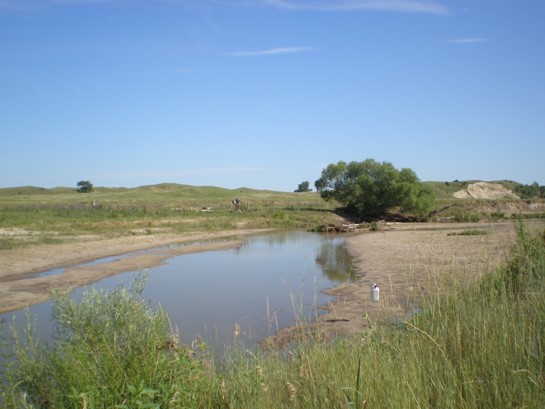
MEASURING THE RESPONSES OF AQUATIC ORGANISMS TO GRASSLAND CONSERVATION: CAN STREAMS OF DREAMS EXIST IN A DEGRADED RIVERSCAPE?
Many conservation programs exist to restore ecological processes in damaged riparian areas and benefit stream ecosystems in hopes to elict responses from aquatic taxa. We quantified the indirect effect of largescale grassland conservation efforts on aquatic taxa in a highly degraded river basin. Despite improvements to stream environments, assemblages have yet to respond to conservation efforts. These conclusions remind us that anecdotes are dangerous and although, at times aesthetically more appealing, not all attempts to restore habitats are equally able to yield measureable benefits. In reality, "if you build it, they may not actually come", for a number of different reasons.
Collaborator(s): Katie Bertrand Graeb & PhD Graduate Committee (South Dakota State University)
Published: Manuscript currently in review
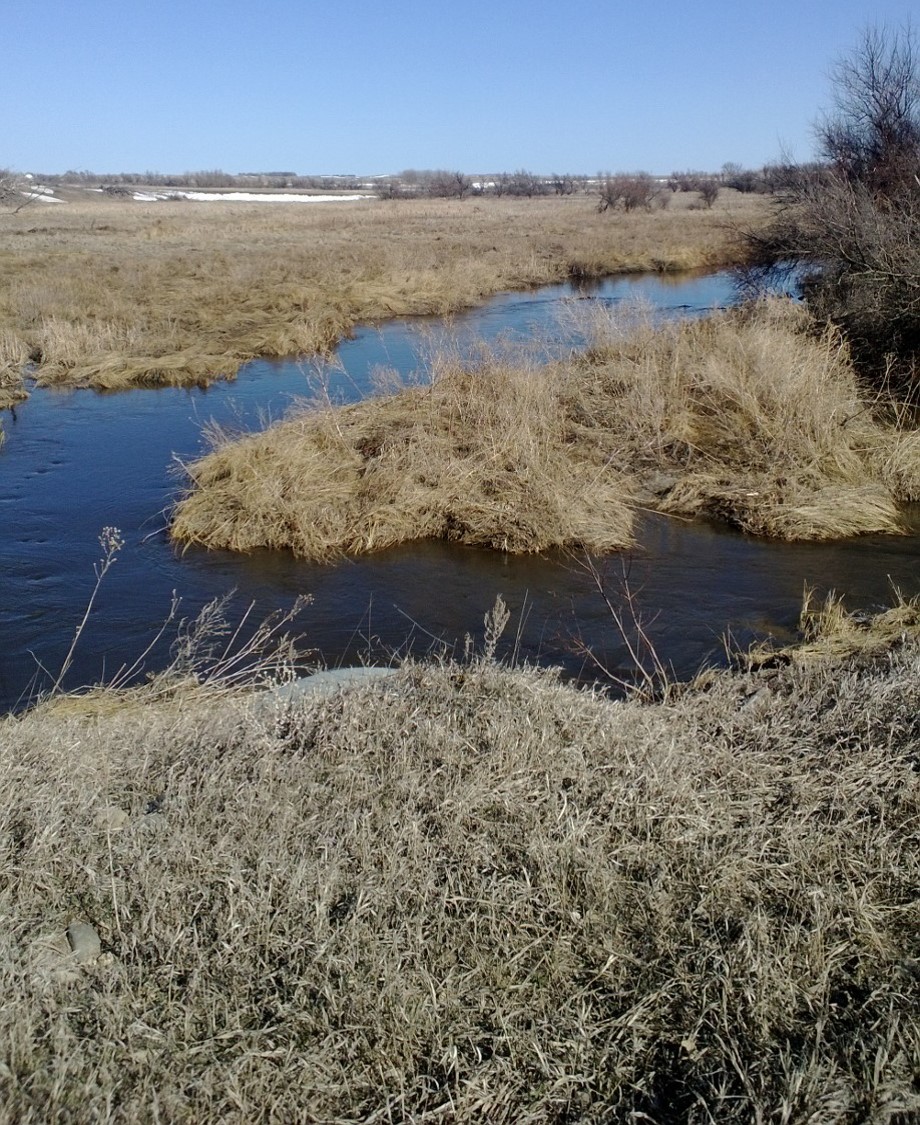
EXPERIMENTAL ANALYSIS OF REINTRODUCTION STRATEGIES TO CONSERVE THE VULNERABLE PLAINS TOPMINNOW IN NEBRASKA
We assessed alternative conservation strategies and generated basic knowledge of a small-bodied prairie fish of management interest, the Plains Topminnow. We integrated both federal and state agency partners, to fill important knowledge gaps in our understanding of this species' ecology and life-history. My collaborations helped systematically identify research questions and population bottlenecks to improve future conservation strategies. Our combination of basic and applied research has led the State of Nebraska to develop a statewide management plan for Plains Topminnow, the first ever management plan for an aquatic species in the state.
Collaborator(s): Keith Koupal (Nebraska Game and Parks Commission) & MS Graduate Committee (University of Nebraska at Kearney)
Published: Manuscripts published at: Endangered Species Research, Aquatic Invasions, Journal of Freshwater Ecology & The American Midland Naturalist
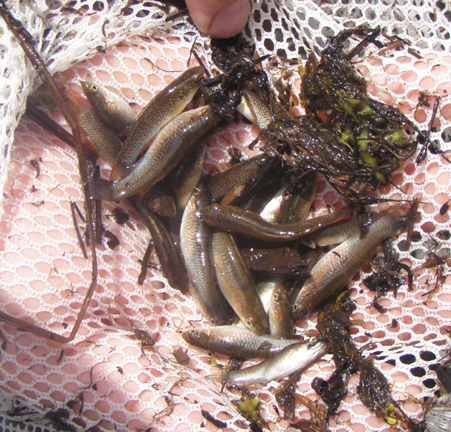
PASSIVE INTEGRATED TRANSPONDER (PIT) TAGS SURGICALLY IMPLANTED INTO DIVERSE SMALL-BODIED FISHES
Innovative conservation tools are critical as freshwater fishes are lost at unprecedented rates.
Recent advances in passive integrated transponder (PIT) tag technology may facilitate the tagging of small species and early life stages of larger species, but currently little is known about their suitability when implanted into small fishes. We evaluated the appropriateness of these tags for nine fish species of different taxonomic groups and body configurations. Impacts of surgically implanted PIT tags were taxa specific, but generally minor. Applications of this technology are plentiful for many small-bodied fishes given little tag loss, uncompromised growth rates, and unchanged behaviors. However, managers tagging darters, dace, and small sturgeon should expect high tag loss and worsened swimming performance.
Collaborator(s): David Delauriers (Fisheries and Oceans Canada) & Matthew Wagner (Mississippi Department of Wildlife, Fisheries, and Parks)
Published: Transactions of the American Fisheries Society
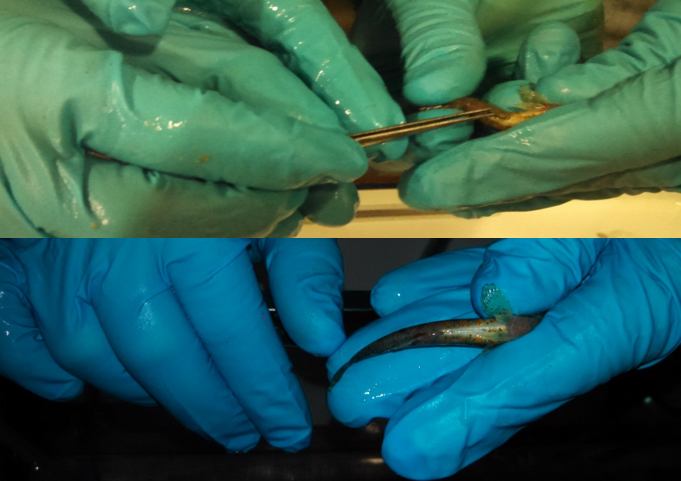
CULTURE OF PLAINS TOPMINNOW IN A POND CONSTRUCTED FOR SPECIES CONSERVATION
Plains topminnow have experienced declines in geographic range and local abundance, which has led to regional protection throughout its native range. Conservation of this species may even require introductions to reestablish populations at known historic locations. We constructed a pond to house a refuge population of plains topminnow in Nebraska. A total of 123 plains topminnow were stocked into the pond and, in two years mark–recapture population estimates suggested that >9,000 individuals were in the pond. Year-class stregnth was variabile. Extensive culture seems to be an effective way to rear plains topminnow and related species. However, more research is needed to determine factors that affect year-class strength and production.
Collaborator(s): Chelsey Pasbrig (South Dakota Game, Fish and Parks), Keith Koupal (Nebraska Game and Parks Commission) & W. Wyatt Hoback (Oklahoma State University)
Published: North American Journal of Aquaculture
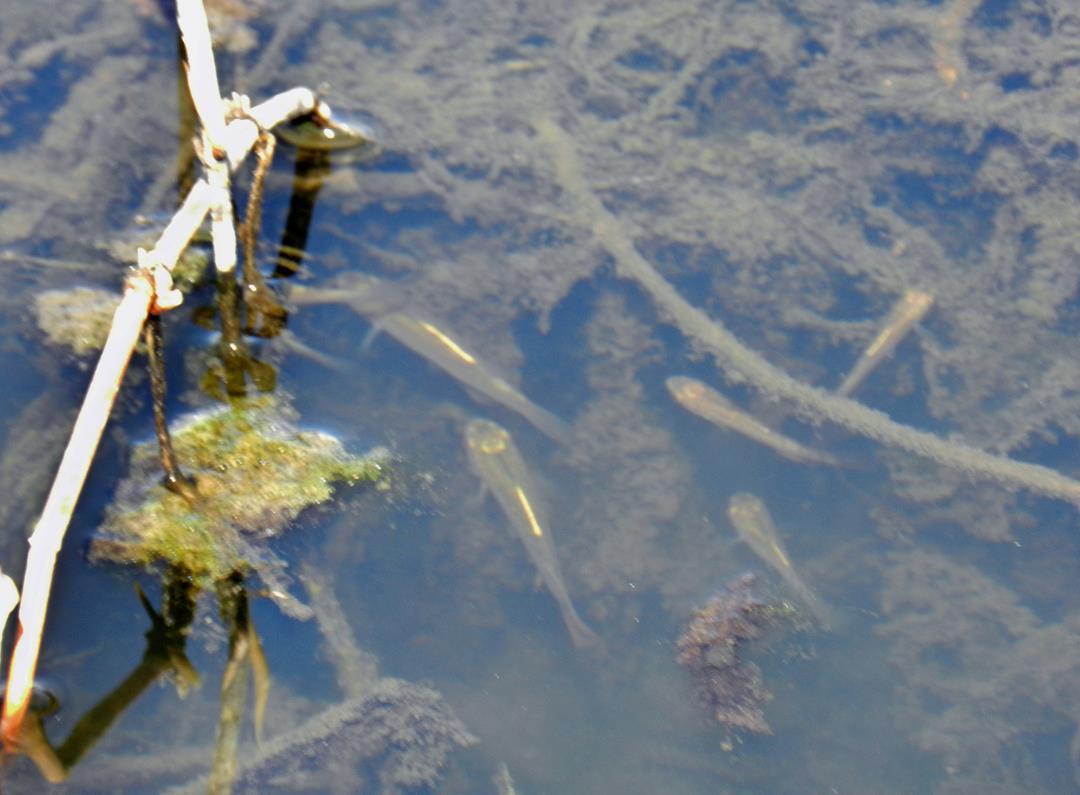
RESTRICTED MOVEMENT OF PRAIRIE FISHES IN A FRAGMENTED RIVERSCAPE RISKS ECOSYSTEM PROCESSES BEING RATCHETED DOWNSTREAM
Although instream barriers are thought to fragment and ultimately displace prairie fish populations downstream, the relative vulnerability and ecological consequences of lost diversity above barriers is largely unknown. We described each species' ability to access (jumping aptitude) and successfully traverse (swimming endurance) simulated instream barriers. We than used experimental streams to identify the consequent risk to stream ecosystem processes if species are unable to recolonize following regular extirpation events. All species failed to circumvent relatively minor obstacles and each had unique effects of ecosystem structure. The risk of systematic species loss above barriers greatly outweighs the opportunity for improvement (i.e., ecological ratchet) suggesting that ecosystem structure could be moving downstream.
Collaborator(s): Paige Ellensohn (South Dakota State University), Jenna Haag (University of Georgia) & Katie Bertrand Graeb (South Dakota State University)
Published: In press at Aquatic Conservation: Marine and Freshwater Ecosystems
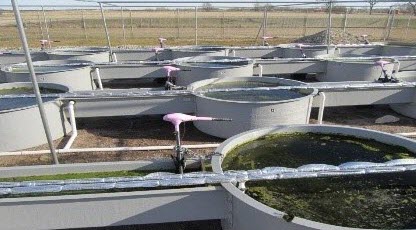
INCORPORATION OF CARBON AND NITROGEN ISOTOPES IN AGE-0 WALLEYE TISSUES FOLLOWING A LABORATORY DIET SWITCH EXPERIMENT
Trophic dynamics are often described by following the exchange of naturally occurring isotopes through aquatic communities, but inferences can be misleading when the time period and discrimination represented by isotopic measures are unknown. We conducted a laboratory diet-shift experiment to describe isotopic assimilation rates and discrimination factors in two age-0 walleye tissues. The assumption that young walleye tissues are in equilibrium with their diet is untrue for weeks following a diet shift and, when incorporated, discrimination factors differ between tissues. This research compliments a broad body of work pertaining to isotope ecology and isotopic incorporation into animal tissues following diet changes. We provide tissue-specific parameters that remove uncertainty associated with the analysis of field collected isotopic age-0 walleye data.
Collaborator(s): Casey Schoenebeck (Minnesota DNR) & Chris Uphoff (Minnesota DNR)
Published: Canadian Journal of Fisheries and Aquatic Sciences
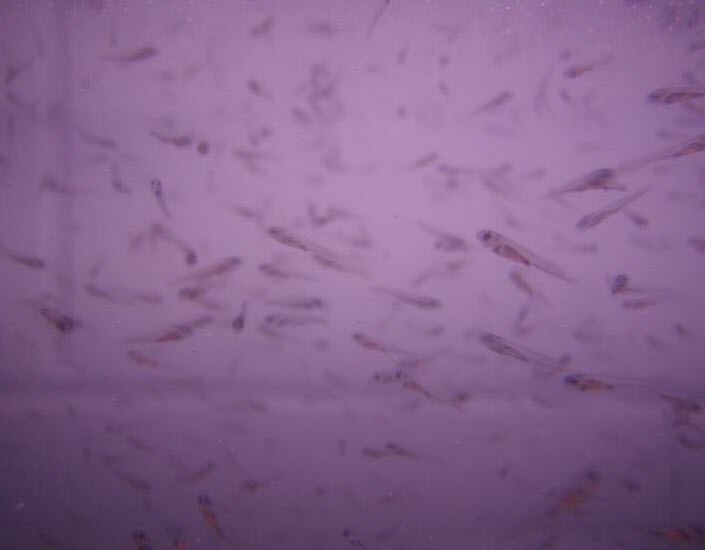
COMPLEX INTERACTIONS BETWEEN NATIVE AND INVASIVE SPECIES: INVESTIGATING THE DIFFERENTIAL DISPLACEMENT OF TWO TOPMINNOWS NATIVE TO NEBRASKA
The establishment of nonnative species and subsequent replacement of native species is among the greatest threats to freshwater biodiversity worldwide. However, little is known of the effects that invasive species have on individual species and specific mechanisms by which species displacement occurs. We investigated the biotic interactions and spatial distribution of both conspecific and heterospecific groups of three closely related species at three life stages (larval, juvenile, and adult) to better understand displacement patterns in the environment.
Collaborator(s): Keith Koupal (Nebraska Game and Parks Commission) & W. Wyatt Hoback (Oklahoma State University)
Published: Aquatic Invasions
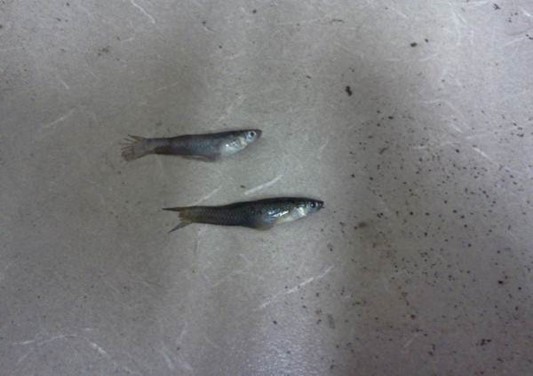
SIZE SELECTIVE PREDATION OF FISH BY HYDROPHILIS TRIANGULARIS AND LETHOCERUS AMERICANUS
Investigation of predator-prey relationships that involve aquatic insects has received little attention, and aspects including feeding rates and prey selection of many predators are poorly understood. Adult giant water-bugs, Lethocerus americanus, and larval giant water scavenger beetles, Hydrophilis triangularis, are large predatory aquatic insects that typically inhabit pools or ponds with little to no flow. Laboratory trials were conducted to determine feeding rates and prey selection of a small fish species, western mosquitofish (Gambusia affinis), by these invertebrate predators. Each of the insect predators consumed a significantly greater number of mosquitofish from the adult size class with giant water-bugs consuming 0.13 fish per day and water scavenger beetles consuming 0.46 fish per day. Insect predation of small fish species could be substantial and because size selective pressures exist, population structure of fish populations may be affected.
Collaborator(s): Mike Cavallaro (Oregon State University) & W. Wyatt Hoback (Oklahoma State University)
Published: Journal of the Kansas Entomological Society
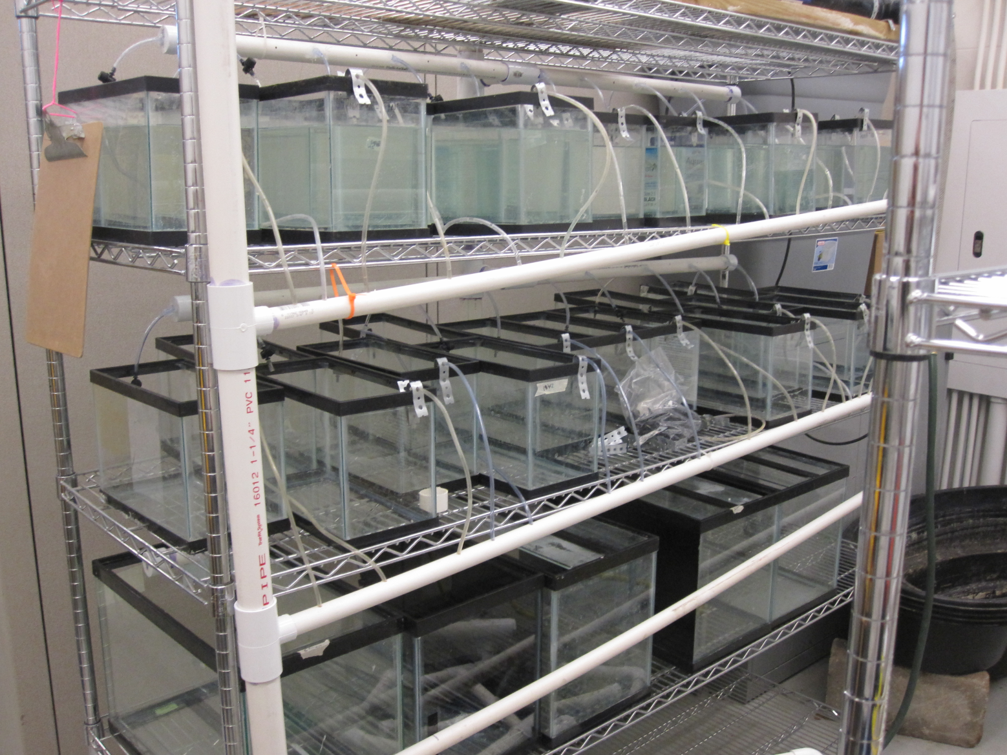
UTILIZING PASSIVE INTEGRATED TRANSPONDER (PIT) TAG TECHNOLOGY TO STUDY LAMPREY AMMOCOETE ECOLOGY AND POPULATION DEMOGRAPHICS
Few studies have been published on the biology of the southern brook lamprey (Ichthyomyzon gagei)–a primitive, nonparasitic, filiform fish. Relatively little is known about the species, especially in their cryptic larval form (i.e., ammocoetes) when they burrow into fine sediments. I am collaborating with several graduate and undergraduate students to better understand the seasonal movement patterns, burrowing behaviors, and population dynamics of these fish using surgically implanted PIT tags.
Collaborator(s): Bradley Richardson (PhD Student), Caleb Aldridge (PhD Student), Bayley Wilmoth (undergradaute student) & Mike Colvin (Mississippi State University)
Status: In Progress
